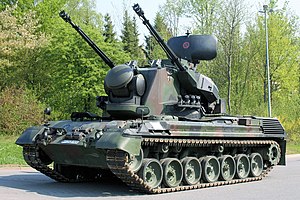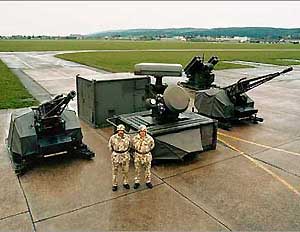July 28, 2008
During the time that the airplane was coming into the Pentagon, there was a young man who would come in and say to the Vice President...the plane is 50 miles out...the plane is 30 miles out....and when it got down to the plane is 10 miles out, the young man also said to the vice president "do the orders still stand?" And the Vice President turned and whipped his neck around and said "Of course the orders still stand, have you heard anything to the contrary!??"
-- From former Secretary of Transportation Norman Mineta's testimony to the 9/11 Commission in 2003, omitted from the official 9/11 Commission Report.
 This was the verbal exchange Mineta alleges he observed in an underground bunker between Vice President Dick Cheney and an unidentified man in the minutes leading up the Pentagon plane strike on 9/11. Norman Mineta is no dummy. His Whitehouse bio notes that in addition to being Bush's Secretary of Transportation and overseeing the creation of the Transportation Safety Administration (TSA), he was also President Clinton's Secretary of Commerce, and formerly the Vice President of Lockheed Martin, Co. He has also served as a US Congressman, as the Mayor of San Jose, and as an Army intelligence officer.
This was the verbal exchange Mineta alleges he observed in an underground bunker between Vice President Dick Cheney and an unidentified man in the minutes leading up the Pentagon plane strike on 9/11. Norman Mineta is no dummy. His Whitehouse bio notes that in addition to being Bush's Secretary of Transportation and overseeing the creation of the Transportation Safety Administration (TSA), he was also President Clinton's Secretary of Commerce, and formerly the Vice President of Lockheed Martin, Co. He has also served as a US Congressman, as the Mayor of San Jose, and as an Army intelligence officer. Mineta's testimony, though anecdotal, has since fanned flames of popular suspicion that Bush administration insiders manipulated the events of 9/11 as they occurred in order to maximize political gain. Specifically, the plane strike on the Pentagon is said to have been allowed to occur by a combination of:
Mineta's testimony, though anecdotal, has since fanned flames of popular suspicion that Bush administration insiders manipulated the events of 9/11 as they occurred in order to maximize political gain. Specifically, the plane strike on the Pentagon is said to have been allowed to occur by a combination of:- Several diversionary NORAD simulations coinciding with the real attacks, and
- A deliberate Executive-level order to "stand-down" all interceptor fighter craft.
Point Defense
An additional item of interest that has been largely ignored is that extremely high-value, critically important facilities such as the Pentagon typically have fully automated, reactive air defense systems in place. These point-defense systems have been mounted on US Navy warships for decades, and are capable of radar-detecting incoming missiles or artillery, and then tracking, targeting, and shooting them out of the sky within seconds. Such robotic sentry guns -- variously referred to as "Area Denial Systems", "Close-In Weapons Systems", and "Active Protection Systems" -- all rely on built-in radar capabilities to track and target incoming projectiles or missiles. The systems are fully automated; once in an active defense state, they will target and fire on an incoming missile or aircraft with no intervention from a human operator. So Vice President Cheney's stand-down order may not have just applied to calling off the fighter interceptors, but also to disabling all automated air defenses around the Pentagon.
40 Years of Robo-Guns

This isn't science fiction; automated point defense systems have been around for decades. Take Raytheon's Phalanx as a first example. First deployed in 1980, this famous system uses separate search and tracking radars (characteristic of such systems) to focus in on its targets. There is no identification friend or foe; it simply analyzes the speed and relative movement of the missile, and fires upon it if the programmed threat criteria are met. The main things it looks for are how rapidly the potential target is incoming, and where it seems to be heading. Primarily deployed aboard US Navy ships, there is also a land-based variant. Each unit is about $3.8 million (much more for advanced optics), and the overall multi-year program cost has been almost $2.7 billion.
 Raytheon has also developed an automated surface-to-air missile launcher, the SeaRAM, using the Phalanx's same radar systems, but with almost four times the effective range of the cannon version, and an improved ability to track and engage multiple targets simultaneously.
Raytheon has also developed an automated surface-to-air missile launcher, the SeaRAM, using the Phalanx's same radar systems, but with almost four times the effective range of the cannon version, and an improved ability to track and engage multiple targets simultaneously. Then there is this German Self-Propelled Anti-Aircraft Gun (SPAAG), an autonomous anti-aircraft cannon tank, which began development in 1963 and has been in service since the 1970s. It may surprise most people, but vehicle-mounted, radar-aware robo-cannons are nothing new.
Then there is this German Self-Propelled Anti-Aircraft Gun (SPAAG), an autonomous anti-aircraft cannon tank, which began development in 1963 and has been in service since the 1970s. It may surprise most people, but vehicle-mounted, radar-aware robo-cannons are nothing new. Finally, German defense giant Rheinmetall offers the Skyshield: a multi-cannon and missile system with separate fire-control and command-post units. This configuration is clearly for base, airfield, or other facility defense.
Finally, German defense giant Rheinmetall offers the Skyshield: a multi-cannon and missile system with separate fire-control and command-post units. This configuration is clearly for base, airfield, or other facility defense.There are numerous other models and variations on the same design theme from defense manufacturers in Russia, Israel, the Netherlands, Spain, China, and other countries. This is a multi-billion dollar industry.
Urban Deployment
The point defense systems in a facility like the Pentagon need to keep the surrounding city's safety in consideration, too. Each shell that does not strike its target can keep going for miles. This is why many modern anti-aircraft cannon systems employ self-destruct rounds to minimize collateral damage. The shells that miss their target explode anyway, and the fragments that fall back to Earth are relatively harmless, at least according to Raytheon.
Since no missile launchers are visible from street view of the Pentagon, a likely set-up for such a location would be a discrete vertical missile launcher with separate radar and fire control systems. The vertical missile launcher can be blended into a building's architecture, or simply buried in the ground outside. The fire control system is the operator interface that allows configuration and control of the automated missile launcher. It is from this remote terminal that the point defense system can be deactivated. This diagram for the Israeli Barak naval missile system illustrates the basic system design:

Untouchable Targets
These anti-aircraft weapon systems are commonly installed on government and military ships, tanks, buildings, and even truck trailers. Their reactive abilities allow them to counter-fire in under a second of initial missile detection. Government sites of the highest importance have such systems in place as a final line of defense against incoming aircraft, and as the only active defense against short-range missiles and artillery. US nuclear facilities employ them. The heavily fortified US Embassy in Baghdad relies on them to keep the Green Zone green. And as the center of American government, Washington, D.C. has more than a few of these systems in place.
Now we are to believe that the most powerful defense agency in the world had its headquarters building successfully attacked by cave-dwelling kamikaze pilots. The "incoming kamikaze" problem was solved a long time ago -- it's called RADAR and explosive artillery. When you link the two with some robotics and software controls, the resulting system becomes an incredibly effective air defense guardian.
The point is that our military's air defenses are unmatched in the world. There is no way -- over half a century after WWII -- that a kamikaze attack on a facility such as the Pentagon would ever succeed on its own. If it did, it would have to be considered the worst security lapse in the Pentagon's history.
No One Got in Trouble
So who's in charge of Pentagon facility security, and surface-to-air defenses in particular? Did they fire this person? Of course not. The worst attack on headquarters in US military history actually resulted in... no demotions, transfers, or any other disciplinary action at the Pentagon. Actually, several people got promoted. But no one was reprimanded for the impossible security lapse. This is serious, because if a plane really can hit the Pentagon, then so can a ballistic missile. Surely, the big brass there have thought of this.
Like Mineta, these people are not stupid. They are some of the most calculating, diabolically ingenious people on earth. They know that you can't just crash a plane into the Pentagon. They know the only way for this to happen is with internal agency complicity -- a deliberate lowering of defenses.
The object that struck the Pentagon that day simply had it too easy. If the 9/11 Commission Report can be trusted on this matter, then apparently no shots were fired at the incoming aircraft on 9/11. No surface-to-air missiles, no interceptor jets. Nothing. The plane came in unscathed and put a huge flaming hole in HQ -- and no one got his wrist slapped. How can we accept this, as a nation that prides itself so much on military defense and security? What ever happened to "failure is not an option"?
No, the depressing truth is that seven years ago, the Pentagon was "successfully" attacked because they wanted to be hit. The air controllers were duped with war game simulations, the interceptor pilots were told to stand down, and all automated point defense around the Pentagon was deactivated. How else can anything crash into one of the most well-defended facilities on Earth without meeting a single countermeasure?
"Resist the urge to defend, so you can retaliate fully."